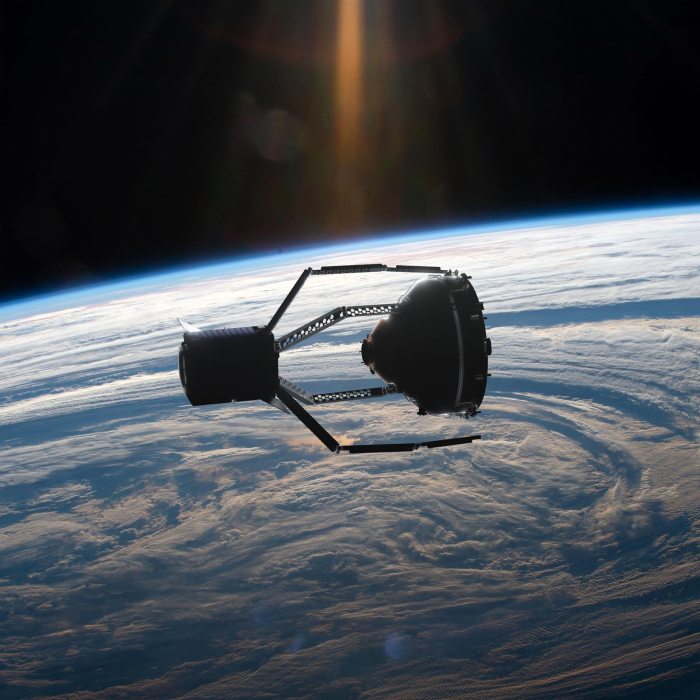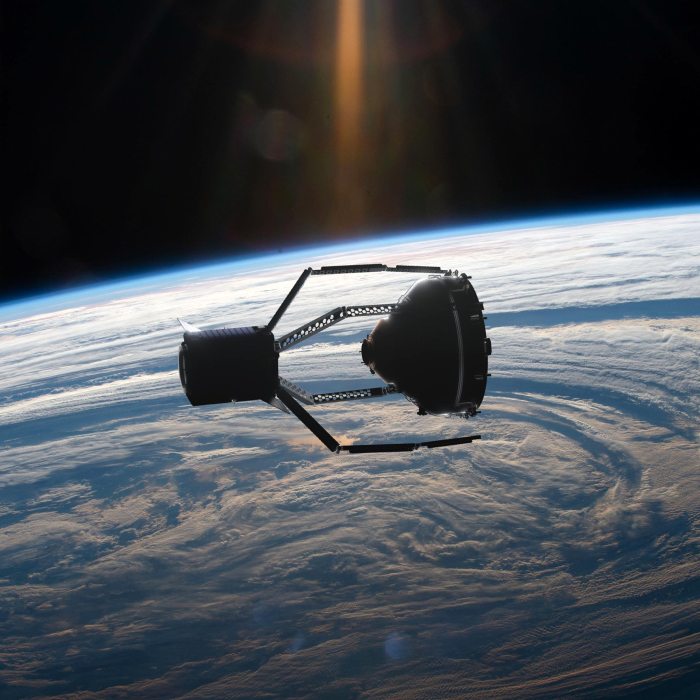Clearspace1 launch contract first ever space debris removal mission – Clearspace-1: First Space Debris Removal Mission marks a pivotal moment in space exploration. This groundbreaking mission, contracted by the European Space Agency, aims to tackle the growing problem of space debris, which poses a significant threat to operational satellites and future space missions.
By demonstrating the feasibility of removing debris from orbit, Clearspace-1 paves the way for a cleaner and safer space environment.
The mission’s success relies on innovative technology, including a specially designed capture system that will safely snag a piece of debris and bring it down to Earth’s atmosphere, where it will burn up harmlessly. This innovative approach is a testament to the ingenuity of engineers and scientists working to address the challenges of space debris.
Clearspace-1 Mission Overview
The Clearspace-1 mission marks a significant milestone in space exploration, representing the first-ever attempt to actively remove space debris from orbit. This pioneering mission, led by the Swiss company Clearspace, aims to demonstrate the feasibility and effectiveness of debris removal technology, paving the way for a cleaner and safer space environment for future generations.
Mission Objectives and Goals
Clearspace-1’s primary objective is to capture and deorbit a piece of space debris, specifically a Vespa upper rocket stage launched in This 100-kilogram object has been orbiting Earth for over three decades, posing a potential threat to operational satellites and astronauts.
The mission aims to achieve the following goals:
- Capture and Deorbit:The mission will utilize a specially designed robotic arm to capture the Vespa stage and safely deorbit it, ensuring its controlled re-entry and disintegration in the Earth’s atmosphere.
- Technological Validation:Clearspace-1 will serve as a proof-of-concept mission, validating the company’s proprietary debris removal technology and demonstrating its effectiveness in a real-world scenario.
- Data Collection:The mission will collect valuable data on the performance of the debris removal system, including its capture mechanism, navigation, and deorbiting maneuvers. This data will be crucial for future debris removal missions and the development of more advanced technologies.
Technical Challenges and Innovations
The Clearspace-1 mission faces several technical challenges, including:
- Precise Targeting:Capturing a specific piece of debris from orbit requires extremely precise targeting and navigation capabilities. Clearspace has developed sophisticated algorithms and sensor systems to ensure accurate rendezvous with the target object.
- Capture Mechanism:The robotic arm designed for this mission must be capable of safely and securely capturing the debris, considering its irregular shape and potential instability. The capture mechanism is designed to adapt to different debris geometries, enhancing the system’s versatility.
- Deorbiting Maneuvers:Deorbiting the debris requires careful planning and execution of maneuvers to ensure its safe re-entry and disintegration in the Earth’s atmosphere. This involves calculating the appropriate trajectory and using precise thrusters to adjust the debris’s orbit.
“Clearspace-1 is a pioneering mission that will demonstrate the feasibility and effectiveness of space debris removal technology. This mission is a crucial step towards a cleaner and safer space environment for future generations.”Dr. Lucile Ducrocq, CEO of Clearspace
Significance of the Mission
The Clearspace-1 mission holds immense significance as the first-ever space debris removal mission. It marks a crucial step towards addressing the growing problem of space debris, which poses a significant threat to operational satellites and astronauts.
- Addressing a Growing Threat:The amount of space debris in orbit is steadily increasing, posing a growing threat to the sustainability of space exploration and commercial activities. The Clearspace-1 mission demonstrates the feasibility of actively removing debris, offering a potential solution to this pressing issue.
- Enabling Future Space Exploration:By demonstrating the effectiveness of debris removal technology, Clearspace-1 paves the way for future missions that can safely remove larger and more hazardous pieces of debris. This will create a cleaner and safer space environment, enabling future space exploration and scientific research.
- International Collaboration:The Clearspace-1 mission is a testament to the importance of international collaboration in addressing global challenges. The mission involves partnerships with various organizations, including the European Space Agency (ESA) and the Swiss Space Office (SSO), highlighting the shared responsibility of ensuring a sustainable space environment.
Space Debris Problem

The Earth’s orbit is increasingly congested with space debris, posing a significant threat to ongoing and future space operations. This debris, ranging from defunct satellites to tiny fragments, can collide with operational spacecraft, causing damage, disruption, and even catastrophic failures.
Types of Space Debris and Their Sources
Understanding the different types of space debris and their sources is crucial for comprehending the scale and complexity of the problem.
- Rocket Bodies:These are the discarded components of launch vehicles, including upper stages and payload fairings, which are often left in orbit after their primary function is complete.
- Satellite Fragments:These include pieces of defunct satellites, such as broken-off antennas, solar panels, and fuel tanks. They can be generated by collisions, explosions, or the natural degradation of spacecraft over time.
- Mission-Related Debris:This category encompasses objects intentionally released during space missions, such as spent rocket fuel tanks, deployment mechanisms, and protective coverings.
- Collision Debris:This refers to the fragments created when space objects collide, often resulting in a cascade effect where one collision generates more debris, which can then lead to further collisions.
Risks Associated with Space Debris Collisions
Space debris collisions pose a significant risk to active spacecraft, as they can cause damage, disrupt operations, and even lead to catastrophic failures. The risks associated with collisions can be categorized as follows:
- Damage to Spacecraft:Collisions with even small pieces of debris can cause significant damage to spacecraft, impacting their functionality and lifespan. This can range from minor dents and scratches to complete system failures.
- Loss of Mission Functionality:Debris collisions can disrupt or completely halt mission operations, leading to a loss of valuable data, scientific observations, and communication capabilities. This can have significant financial and scientific consequences.
- Catastrophic Failures:In extreme cases, collisions with large debris objects can result in the complete destruction of spacecraft, leading to the loss of valuable assets and potentially endangering human life.
- Kessler Syndrome:This refers to a scenario where the density of space debris becomes so high that collisions become increasingly likely, leading to a cascading effect of debris generation. This could eventually render low Earth orbit unusable for future space operations.
Mitigation Strategies for Space Debris
To address the growing threat of space debris, various mitigation strategies are being implemented, including:
- Design for Debris Mitigation:This involves incorporating design features into spacecraft and launch vehicles to minimize the generation of debris. Examples include using non-explosive separation mechanisms and designing spacecraft with less fragmentation potential.
- Active Debris Removal:This involves developing technologies to capture or remove existing debris from orbit. Clearspace-1 is a prime example of such an initiative, aiming to demonstrate the feasibility of debris removal technology.
- Space Traffic Management:This involves establishing regulations and protocols to manage the movement of spacecraft in orbit, minimizing the risk of collisions and promoting responsible space operations.
- International Cooperation:Collaborative efforts among space agencies and nations are crucial for addressing the global nature of the space debris problem. Sharing data, coordinating debris removal efforts, and establishing international guidelines are essential for effective mitigation.
Clearspace-1 Technology
Clearspace-1 employs a novel and innovative approach to capturing and removing space debris. This technology involves a robotic spacecraft designed to autonomously rendezvous with and capture targeted debris, safely removing it from orbit.
Capture System
The heart of Clearspace-1’s technology lies in its specialized capture system. It utilizes a “net” that gently envelops the debris, ensuring its secure capture. This net is composed of lightweight, high-strength material, carefully designed to withstand the harsh conditions of space and effectively capture debris of varying shapes and sizes.
The capture process is meticulously planned and executed. First, Clearspace-1 approaches the debris, guided by precise navigation systems. Once in close proximity, the net is deployed, carefully enveloping the target. The net’s design allows for a secure hold, preventing the debris from escaping.
After capture, Clearspace-1 can then maneuver the debris to a lower orbit, where it will eventually de-orbit and burn up in the Earth’s atmosphere.
Safety Measures, Clearspace1 launch contract first ever space debris removal mission
Ensuring the safety of the mission and minimizing risks is paramount. Clearspace-1 incorporates several safety measures to ensure a successful and secure operation. These measures include:
- Autonomous navigation and control systems: These systems are designed to ensure accurate and reliable maneuvering, minimizing the risk of collisions or unintended interactions with other spacecraft.
- Redundant systems and backup mechanisms: These provide additional layers of protection, ensuring that the mission can continue even if one system fails. This ensures the mission’s resilience and increases the chances of a successful outcome.
- Extensive simulations and testing: Before launch, Clearspace-1 undergoes rigorous simulations and testing to validate its design and ensure its performance in real-world conditions. This comprehensive approach helps identify potential risks and develop mitigation strategies, ensuring a safe and successful mission.
The Future of Space Debris Removal
Clearspace-1, the first-ever mission dedicated to removing space debris, marks a pivotal moment in our efforts to maintain the sustainability of space exploration. This groundbreaking mission not only demonstrates the feasibility of debris removal but also paves the way for a future where space is safer and more accessible for all.
Obtain recommendations related to google acquires restaurant site builder appetas will shut favor new endeavors that can assist you today.
Impact of Clearspace-1 on the Future of Space Debris Removal
Clearspace-1’s success will serve as a powerful catalyst for the development and deployment of advanced debris removal technologies. The mission’s validation of the “capture and deorbit” technique, coupled with the demonstration of its effectiveness in a real-world scenario, will inspire confidence in the viability of this approach.
This confidence will encourage further investment in debris removal technologies, leading to the development of more sophisticated and efficient solutions.
Clearspace-1 as a Precedent for Future Missions
Clearspace-1 will set a precedent for future space debris removal missions by establishing a framework for international cooperation and collaboration. The mission’s success will demonstrate the need for a coordinated global effort to address the growing threat of space debris.
This will lead to the development of international standards, regulations, and protocols for debris removal operations.
Potential for Future Technologies and Approaches to Address Space Debris
The future of space debris removal is bright, with advancements in technology promising even more effective and efficient solutions.
- Active Debris Removal:This involves sending spacecraft to capture and deorbit debris, as demonstrated by Clearspace-1. Future advancements in this area could include the development of more agile and versatile capture mechanisms, enabling the removal of larger and more complex debris objects.
- Passive Debris Removal:This involves using techniques like “spacecraft graveyards” or “debris sails” to passively nudge debris out of harm’s way. Future developments in this area could focus on creating more durable and efficient materials for these passive removal methods.
- Debris Mitigation:This involves preventing the creation of new debris in the first place. Future efforts could include the development of more sustainable spacecraft designs, including the use of reusable components and the implementation of stricter guidelines for spacecraft decommissioning.
- Advanced Robotics and AI:The integration of advanced robotics and artificial intelligence (AI) will play a crucial role in future debris removal missions. Robots equipped with AI can be used to perform complex tasks, such as identifying and capturing debris, navigating cluttered environments, and optimizing removal operations.
International Collaboration: Clearspace1 Launch Contract First Ever Space Debris Removal Mission
The Clearspace-1 mission is a testament to the power of international cooperation in tackling global challenges. It involves a collaborative effort between multiple organizations and countries, highlighting the shared responsibility for managing the space environment.
Collaboration Partners
The diverse expertise and resources of different entities have been crucial in making Clearspace-1 a reality. Here are some key players:
- Clearspace SA:The Swiss-based company spearheading the mission, responsible for developing the technology and executing the mission.
- European Space Agency (ESA):Providing technical support, expertise, and funding through its Space Debris Office.
- Swiss Space Office:Supporting the mission through funding and fostering collaboration within the Swiss space sector.
- Other Organizations:Various universities, research institutions, and companies from Switzerland and other countries contribute to the mission’s success.
Contributions of Different Countries
The Clearspace-1 mission is a global effort, with contributions from various countries:
- Switzerland:Clearspace SA, the lead company, is based in Switzerland, which has a strong space sector and is actively involved in debris mitigation efforts.
- European Union:The European Space Agency (ESA) is a key partner, providing technical support and funding, reflecting the EU’s commitment to space debris mitigation.
- Other Countries:The mission also benefits from contributions from other countries, showcasing the global nature of space debris management.
Importance of Global Cooperation
The space environment is a shared resource, and addressing the space debris problem requires a collective effort. International collaboration in space debris removal is crucial for several reasons:
- Shared Responsibility:Space debris is a global problem, and all countries that contribute to space activities share responsibility for its mitigation.
- Knowledge Sharing:Collaboration facilitates the exchange of knowledge, technologies, and best practices, accelerating progress in space debris removal.
- Resource Sharing:Pooling resources, expertise, and infrastructure allows for more efficient and effective space debris removal efforts.
- Preventing Future Conflicts:Global cooperation helps establish norms and guidelines for responsible space activities, reducing the risk of future conflicts in space.
Ethical Considerations
The removal of space debris presents a unique set of ethical considerations. While the goal of cleaning up space is undoubtedly beneficial, the act of removing debris itself raises questions about responsibility, unintended consequences, and the long-term impact on the space environment.
Potential Consequences of Debris Removal
The potential consequences of removing debris can be both positive and negative. Removing debris can help mitigate the risk of collisions with operational spacecraft, ensuring the safety of astronauts and protecting valuable assets. It can also contribute to a more sustainable space environment, allowing for future generations to explore and utilize space without facing the same challenges.
- Positive Consequences:
- Reduced risk of collisions with operational spacecraft, enhancing safety for astronauts and missions.
- Improved long-term sustainability of the space environment, enabling future generations to explore and utilize space.
- Potential for resource recovery, allowing for the reuse of valuable materials.
- Negative Consequences:
- Unintended consequences:Removing debris could potentially create new debris or alter the orbital environment in unforeseen ways. For instance, the fragmentation of a large debris object during removal could create a larger number of smaller debris fragments, increasing the overall debris population.
- Cost and feasibility:The cost of debris removal can be substantial, and the technical challenges involved can be significant. The feasibility of removing certain types of debris, particularly large objects, remains a significant hurdle.
- Prioritization:Decisions about which debris to remove and the order of removal will require careful consideration. Prioritizing debris based on its risk potential or its impact on specific missions could raise ethical concerns about fairness and equity.
International Guidelines and Regulations
The ethical considerations surrounding space debris removal highlight the need for international guidelines and regulations to govern the removal process. These guidelines should address issues such as:
- Responsibility:Who is responsible for removing debris? Should the owner of the debris be responsible, or should the international community share the responsibility?
- Prioritization:What criteria should be used to prioritize debris removal? Should the focus be on removing debris that poses the greatest risk to operational spacecraft, or should other factors, such as the size of the debris or its historical significance, be considered?
- Transparency:How should information about debris removal activities be shared with the international community? Transparency is crucial to ensure that all stakeholders are aware of the risks and benefits of debris removal.
- Environmental impact:How can we minimize the environmental impact of debris removal activities? This includes ensuring that debris removal operations do not create new debris or alter the orbital environment in unintended ways.




